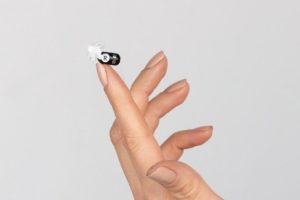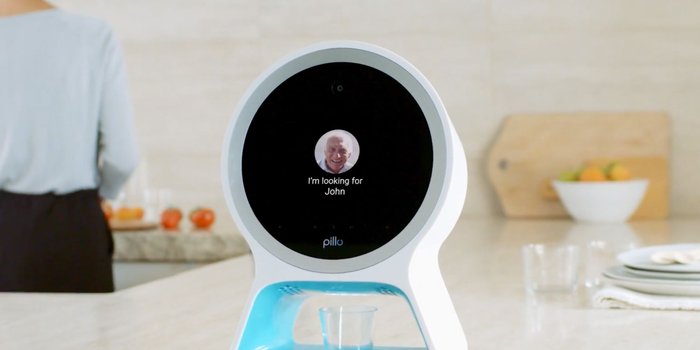From AI-powered translation to the first smart train set, here are five entrepreneurs changing the game in their industries.
CES might be the world’s biggest grandstand for innovation’s mammoths, but at the same time it’s one of the essential centers for the scene’s inventive upstarts. One of its show territories, known as “Aha Park,” regularly has in excess of 1,200 new companies from in excess of 40 nations. What’s more, albeit gaudy stalls from any semblance of Google, Intel, Huawei and all the more regularly create buzz, the new businesses will in general have riveting stories – and even the absolute most discussed items. Here are five of the most motivating new businesses we found at the show.
Timekettle

Leal Tien has dependably been an aficionado of sci-fi books. That is the reason The Hitchhiker’s Guide to the Galaxy’s “Babel fish” – an animal that can dwell in your ear and make an interpretation of any language addressed you continuously – roused him to help establish his interpretation tech organization. Propelled in November 2018, Timekettle’s feature item is the WT2 Plus, a lot of AI-fueled interpretation earpieces that is as of now realized in $3 million in deals in spite of next to zero advertising.Another of Tien’s motivations? His folks, who talk just a single language. He sent them on an excursion to the Alps in 2016 and downloaded numerous interpretation applications for them, yet Tien’s folks didn’t utilize them – notwithstanding when his mom got height infection. “It was excessively unbalanced,” he heard. At long last, Tien comprehended that it wasn’t just about interpretation – it was about correspondence, agreeable collaboration and building nearer connections. “We trust interpretation isn’t sufficient,” he said.Currently, most interpreter alternatives available require more work on the buyer’s part than the WT2 Plus does. Focused interpretation items more often than not direct that one individual talk at once, that somebody needs to download an application or that one individual talks into a cell phone while different uses an earpiece. Be that as it may, utilizing Tien’s answer, individuals can convey through just part the earpieces and offering to each other; at that point, the two of them can begin imparting right away. The earpieces additionally utilize double commotion decrease tech by method for neural systems, and they can decipher in excess of 36 dialects.
MATE

Construct something you yourself would purchase, and others will probably do likewise. That is one reason Christian Adel Michael and Julie Kronstrom Carton established MATE in 2016 in the wake of going through around two years hunting down a cool, moderate electric bike. The sibling and-sister group hail from Copenhagen, a city that clearly has a greater number of bicycles than individuals. At the point when the two couldn’t locate a hip, clean-cut e-bicycle, they knew there was a “gap in the market,” Michael said. They chose to fill it, beginning work on the venture in 2016 and all the while propelling their first crowdfunding effort on Indiegogo.
Since that first crusade, MATE has sold 8,000 bicycles to clients in excess of 50 nations. That is key supposing that the kin had gone the conventional course of dissemination chains, they would’ve expected to hold fast to store stock rules, conceivably fabricating a lot a greater number of items than individuals would arrange. By offering straightforwardly to their clients, they fabricated the definite measure of bicycles that were requested (and likely spared 10 to 40 percent on assembling costs, said Indiegogo CEO David Mandelbrot). The organization additionally came to an unmistakable crowdfunding stage achievement: After raising $20 million more than two crusades, MATE has collected more cash than some other organization in Indiegogo history.
Regular crowdfunding exhortation is to chip away at “making publicity” for your item for as long as a half year or a year, yet Michael and Carton didn’t do that, rather selecting to put some cash towards focused promotions on Facebook and somewhere else on the web. The e-bicycles are accessible now, and until Jan. 31, 2018, limited valuing begins at $699 in addition to transportation costs. After that date, costs in the U.S. will probably ascend to somewhere in the range of $1,400 and $2,000, Carton said.
Eargo

It’s hard to upset the portable amplifier industry – it’s institutional, and it’s controlled by the FDA. Yet, among people ages 20 to 69 with hearing misfortune who could profit by portable hearing assistants, just around 16 percent has ever utilized them. That recommends now is the ideal opportunity for something new. Furthermore, Eargo – cool, imperceptible portable amplifiers sold straightforwardly to shoppers rather than through a clinician – offers only that. Costs run from about $1,950 to $2,750, which the organization says is much lower than the $8,000 to $10,000 industry standard for “undetectable” listening devices, and they accompany a smooth versatile charging case.
Originators Florent Michel, a medicinal specialist, Raphael Michel and Daniel Shen needed to diminish listening device cost and shame, and they did it by method for the previous’ innovation of Flexi Fibers – therapeutic evaluation silicone and a key piece of Eargo portable amplifiers. In Dr. Florent Michel’s work as an ENT specialist, he experienced numerous patients with hearing misfortune and saw the shame related with amplifiers firsthand. His child Raphael met Shen at Stanford – the previous was in the structure program, while the last was examining medication – and in 2010, they jump started the organization out of Raphael’s Palo Alto carport.
Amplifier guidelines were stringent, yet Eargo found a hazy area: The FDA doesn’t direct the clearance of listening devices. That is directed state by state, and in case you’re ensured to sell (or “administer”) portable amplifiers in a single state, you’d need to pass an examination to offer them in another. Eargo put its item available to be purchased on the web, legitimately to buyers. Industry veteran Christian Gormsen thought it was insane (What sort of buyer will burn through a large number of dollars on portable amplifiers on the web, particularly when many are in their 60s and more seasoned?) Now, Gormsen is Eargo’s CEO.
Pillo Health

In 2005, Emanuele Musini’s dad passed far from a heart condition. He wasn’t accepting his prescriptions as coordinated or following the majority of his specialist’s requests, Musini stated, and the disaster hit his family hard. A bothering thought kept at Musini over the next years: What if there had been a “somebody” there to help watch out for his dad and his wellbeing plan? What might have happened at that point?
Musini set out to structure one: a “somebody” inside the home to fill in as a kind of wellbeing assistant, particularly with regards to accepting meds as booked. Home parental figures are cost-restrictive for some families, and he needed to make maturing set up – in the solace of one’s own home – increasingly open. That is the reason he made Pillo, a medicinal services aide for the home, after helping to establish his organization Pillo Health. The gadget is accessible now and expenses $499, in addition to a $39 month to month membership. Planned updates cause Pillo to “wake up,” filter the space for an individual and alarm them it’s a great opportunity to take a specific drug. The client would then be able to decide on Pillo to apportion it. On the off chance that they don’t take their medicine for a set timeframe, Pillo will alarm the client’s consideration group (regardless of whether restorative experts or family) so they can begin a discussion.
Another element of Pillo: A client can ask it inquiries about wellbeing, from general (“what number calories are in an apple?”) to explicit (“Show me my health plan”). They can look through their prescription kinds and times, just as their “carefriends” (or parental figures).
Intelino

Shopper apply autonomy organization Intelino is the very meaning of a startup: organizer Dr. Armen Kroyan formally propelled it the main day of CES 2019. Its first item? A $99 “savvy train set” charged as the first of its sort, total with motor, wagons, track pieces, decals, charging link and – maybe most special – “activity snaps,” or little, hued plastic tiles that can snap onto any bit of track. The tiles’ hues are associated with various savvy highlights – green signifies speed, for instance, so putting three green activity snaps straight would order the train to move quick, two would yield a medium speed and one would mean moderate. One red activity snap advises the train to stop for two seconds, while three of every a line would make it stop for 10. Blue is related with course, while yellow is for dropping off a wagon. Furthermore, there’s a discretionary bluetooth-empowered friend application that can go about as a train dashboard, manual abrogate mode, approach to make custom activity directions for the snaps and the sky is the limit from there.
Kroyan cooked up the new interpretation of “associated play” from firsthand experience as a parent to two young men. His more established child, presently age 7, has been playing with train sets since he was 2, however the manner in which he played with them moved throughout the years: from the start, he required a ton of assistance fabricating the tracks, yet as he developed, he assembled increasingly more intricate track structures. Kroyan needed to make a path for children, including his own, to utilize innovation effectively rather than latently devouring substance by method for screens. Propelled by his child, he chose to take the instinct of the exemplary toy train involvement and increase it with an intelligent, material layer of innovation. Trains were an ideal stage for the kind of consecutive reasoning utilized in STEM, he thought – before a youngster fabricates a track, they frequently need to assume what it’ll resemble in general.
The train set, accessible to purchasers in March 2019, is retrocompatible with wooden tracks so it can fill in as an expansion to any kid’s set, and Kroyan trusts it will grow up close by children that may initially utilize it as a common train set, at that point proceed onward to utilize activity snaps to manufacture expound sets. When in doubt, those means don’t require any kind of screen cooperation, Kroyan stated, however on the off chance that guardians need to permit use of the going with application later on, it can add another layer to what a kid can do with their train set.





















